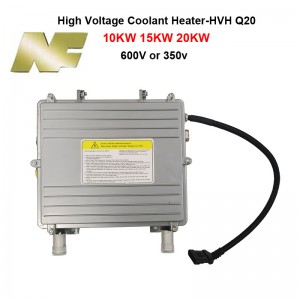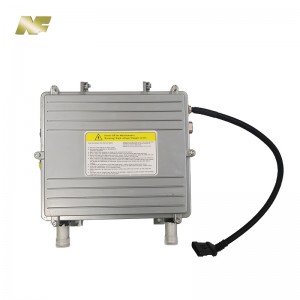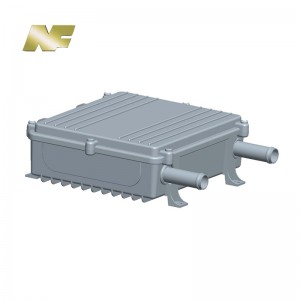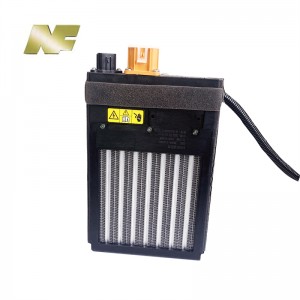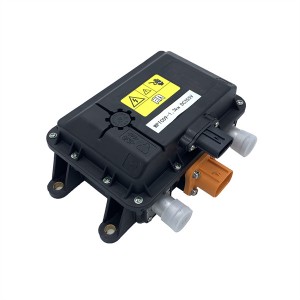NF 10KW/15KW/20KW HV Coolant Heater 350V 600V High Voltage PTC Coolant Heater
Description
In the field of electric vehicles, high-voltage coolant heaters have become an important component to ensure optimum performance and efficiency. As technology has advanced, these heaters have proven to be game changers, providing a reliable and efficient solution for temperature control in electric vehicles. Today, we’ll take a deep dive into the benefits and advantages of high pressure coolant heaters and how they can improve the overall efficiency of electric vehicles.
A popular choice is the EV 10/15/20KW High voltage Coolant Heater, also known as a High voltage PTC Coolant Heater or HV Coolant Heater. This powerful device efficiently heats the coolant in electric vehicles, reducing warm-up time, especially in cold weather conditions. By reducing the time it takes for the vehicle to reach its optimum temperature, the high-voltage coolant heater minimizes the energy consumption of electric vehicles, thereby increasing their overall efficiency.
One of the main advantages of high voltage coolant heaters is their ability to operate independently of the main battery pack. This means that while the heater ensures that the cab remains comfortable in cold weather, it does not contribute to any power consumption in the drive yard. Therefore, the driver can enjoy a warm and comfortable cockpit experience without worrying about a significant drop in the cruising range of the vehicle.
In addition, a high-voltage coolant heater contributes to efficient battery management. These heaters help maximize battery life and performance by keeping the battery in an optimal temperature range. They prevent the battery from overheating or freezing, which can reduce capacity and overall lifespan.
Another noteworthy benefit of high voltage coolant heaters is reduced wear and tear on the overall vehicle system. By providing a consistent and controlled heating element, it reduces stress on other parts of the vehicle. This in turn minimizes maintenance needs and ensures a longer lifetime for the entire power system.
All in all, the EV 10/15/20KW High Voltage Coolant Heater, along with other HV coolant heaters, brings significant advantages to electric vehicles. From improving energy efficiency to enhancing battery management and reducing wear and tear, these devices play a vital role in optimizing the overall performance of electric vehicles. As the world moves toward cleaner mobility solutions, high-pressure coolant heaters are an essential tool in making electric vehicles more reliable, efficient, and fun to drive.
Technical Parameter
| Power (KW) | 10KW | 15KW | 20KW |
| Rated voltage(V) | 600V | 600V | 600V |
| Supply voltage (V) | 450-750V | 450-750V | 450-750V |
| Current consumption (A) | ≈17A | ≈25A | ≈33A |
| Flow (L/h) | >1800 | >1800 | >1800 |
| Weight (kg) | 8kg | 9kg | 10kg |
| Installation size | 179x273 | 179x273 | 179x273 |
For more detailed information, such as 2D drawings, 3D models, specifications, etc., please contact us in time!
Packaging & Shipping
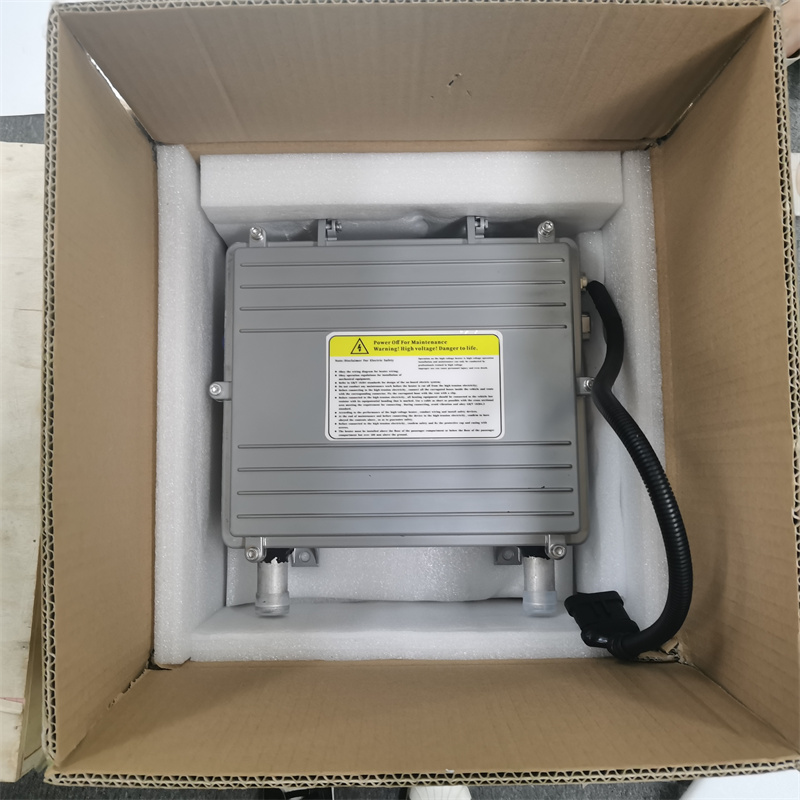

Packing:
1. One piece in one carry bag
2. Suitable quantity to an export carton
3. No other packing accessories in regular
4. Customer required packing is available
Shipping:
by air, sea, or express
Sample lead time: 5~7 days
Delivery time: about 25~30 days after order details and production confirmed.
Advantage
1.Low maintenance cost
Product maintenance free,High heating efficiency
Low cost of use,No need to replace consumables
2.Environmental protection
100% emission free,Quiet and noiseless
No waste,Strong heat
3.Energy saving and comfort
Intelligent temperature control,Closed-loop control
Stepless speed regulation,Heating quickly
4. Provide sufficient heat source, the power can be adjusted, and solve the three major problems of defrosting, heating and battery insulation at the same time.
5. Low operating cost: no oil burning, no high fuel costs; maintenance-free products, no need to replace parts damaged by high temperature combustion every year; clean and no stains, no need to clean up oil stains frequently.
6. Pure electric buses no longer need fuel for heating and are more environmentally friendly.
Application

Our Company


Hebei Nanfeng Automobile Equipment (Group) Co., Ltd is a group company with 5 factories, that specially produce parking heaters, heater parts, air conditioner and electric vehicle parts for more than 30 years. We are the leading auto parts manufacturers in China.
Our factory's production units are equipped with high tech machineries, strict quality,control testing devices and a team of professional technicians and engineers endorsing the quality and authenticity of our products.
In 2006, our company has passed ISO/TS16949:2002 quality management system certification. We also bagged the CE certificate and Emark certificate making us among the only few companies in the world acquiring such high level certifications. Currently being the largest stakeholders in China, we hold a domestic market share of 40% and then we export them around the globe particularly in Asia, Europe and Americas.
Meeting the standards and demands of our customers have always been our top priority. It always encourages our experts to continuously brain storm, innovate, design and manufacture new products, impeccably suitable for the Chinese market and our customers from every nook of the world.
FAQ
1. What is a battery compartment coolant heater?
A battery compartment coolant heater is a device designed to heat the coolant in electric vehicle battery packs to ensure optimum performance and extend battery life. It helps maintain battery temperature in cold weather conditions, enabling efficient energy use and reducing the risk of reduced range or battery performance.
2. How does the battery compartment coolant heater work?
The battery compartment coolant heater operates by drawing power from the vehicle battery or an external power source. It circulates heated coolant through the battery pack, keeping it at the ideal operating temperature. It can be programmed to activate at specific times, allowing the battery to warm up before driving in cold weather.
3. What are the benefits of using a battery compartment coolant heater?
There are several advantages to using a battery compartment coolant heater. It improves battery efficiency and performance by keeping the battery temperature within an optimal range, especially in cold weather. This in turn helps extend battery life and ensure consistent range throughout the year.
4. Do all electric vehicles need a battery compartment coolant heater?
Not all electric vehicles require a battery compartment coolant heater. Whether it is required depends on a variety of factors, including the climate in which the vehicle will be operated. If you live in an area with cold winters or regularly experience sub-zero temperatures, a battery compartment coolant heater may help maintain optimal battery performance and range.
5. Can an existing electric vehicle be equipped with a battery compartment coolant heater?
In some cases, battery compartment coolant heaters can be retrofitted into existing EVs. However, this may depend on the specific make and model of the vehicle and the availability of compatible aftermarket options. It is recommended to consult a professional or contact your vehicle manufacturer for instructions on retrofitting the battery compartment coolant heater.
6. Can the battery compartment coolant heater be used all year round?
While the battery compartment coolant heater is primarily used to warm the battery pack in cold weather, it can also be used year-round. In warmer climates or during the summer, the heater can be programmed to run less frequently, or even shut off when not needed. This flexibility enables optimal battery temperature management under varying weather conditions.
7. How much power does the battery compartment coolant heater consume?
The power consumption of the battery compartment coolant heater varies by model and its settings. On average, they consume 1-3 kilowatts of electricity in operation. Power consumption can be further optimized by programming the heater to only come on when necessary, thereby reducing energy consumption.
8. Does the battery compartment coolant heater require maintenance?
Like other vehicle components, the battery compartment coolant heater may require regular maintenance to ensure optimum performance. It is important to check the condition of the heater (including its connections and coolant level) and follow any maintenance instructions provided by the manufacturer. Regular maintenance helps identify and prevent any potential problems that could affect heater performance.
9. Can the battery compartment coolant heater be controlled remotely?
Many electric vehicles with battery compartment coolant heaters feature remote control. This means owners can activate or schedule the heater through a smartphone app or a dedicated vehicle interface. The remote control feature provides convenience and allows the user to warm up the vehicle's battery before entering the vehicle.
10. Can the owner install a battery compartment coolant heater?
The installation of a battery compartment coolant heater can require expertise, especially when retrofitting an existing vehicle is involved. While aftermarket options are available for some vehicles, it is recommended to consult a professional or authorized dealer for proper installation. They can ensure that the heater is installed correctly and safely according to the manufacturer's guidelines.


